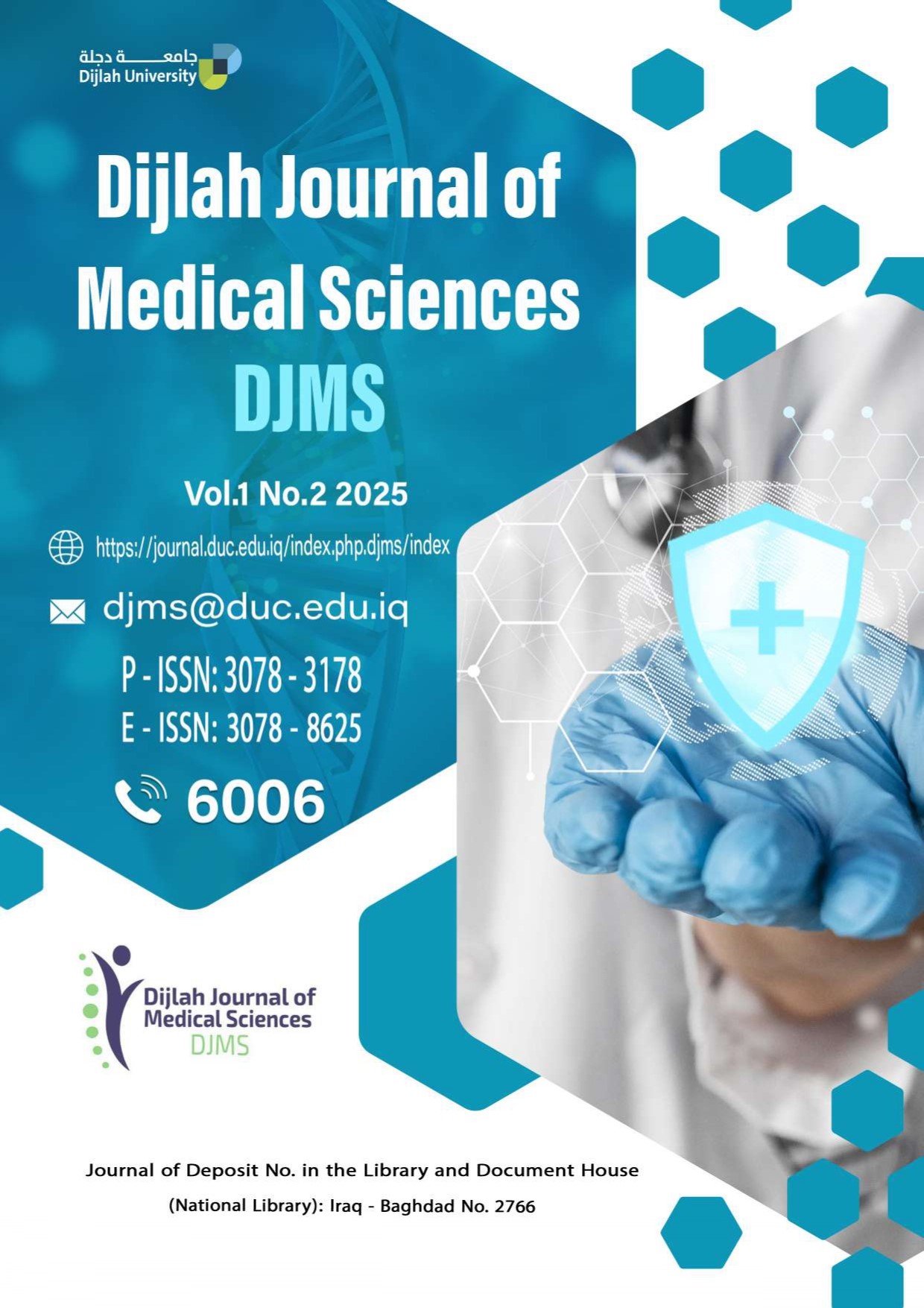pdf Observational Study on Breast Lump Cases in Iraqi Women Visiting the Breast Cancer Screening Unit at Al Elweiya Teaching Hospital in Baghdad
Dr. Lutfi Ghulam Awazli, Rafif Nemah Hassoni and najim Abid Issa
DOI:
https://doi.org/10.65204/DJMS-OS-BLCKeywords:
Breast lump, Benign, MalignantAbstract
Breast lumps or swelling are a common concern for women and carry potential risks, especially with the global rise in breast cancer cases. In Iraq, the incidence of breast cancer is increasing, notably impacting younger women. Common breast symptoms prompting women to seek medical attention include breast pain, nipple discharge, and palpable masses. Increased public awareness and enhanced screening methods have enabled earlier detection, allowing for treatment during stages where complete surgical resection and curative options are viable. This study aimed to examine the relationship between demographic and clinical factors and the presence of breast lumps, as well as to identify the age distribution of a study was conducted on women with palpable breast lumps who attended Al-Elweiya Teaching Hospital. This prospective study included 209 cases of palpable breast masses in female patients, assessed through a comprehensive evaluation process at the Tumor Women Center in Al-Elweiya Maternity Teaching Hospital between February and December 2023. Patients presenting with clinical signs of breast lumps underwent a thorough medical history, physical examination, and further assessment via mammogram, ultrasonography, FNAC, and/or core biopsy. Following diagnosis, patients were either scheduled for follow-up or definitive surgery. Among the 209 cases, the majority of patients (27.2%) were in the 41-50 age groups. Benign breast lumps accounted for 144 cases (68.8%), while 65 cases (31.1%) were malignant. A highly significant (P=0.001) association was observed between cases of malignant breast lumps and the 50-59 age group. Factors in married women who have fewer than five children, nipple retraction, and lymph node involvement showed highly significant correlations with breast lumps (P<0.01). Benign breast disease was the most prevalent diagnosis, with fibro-adenoma being the most common benign lesion. Breast cancer cases were less frequent, affecting about one-third of women and showing a trend toward younger age groups.

